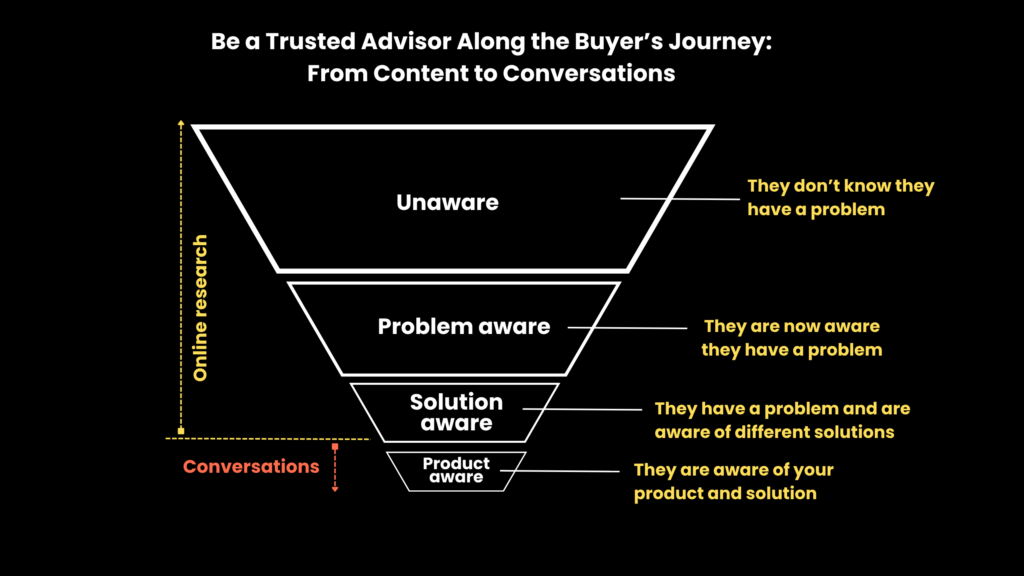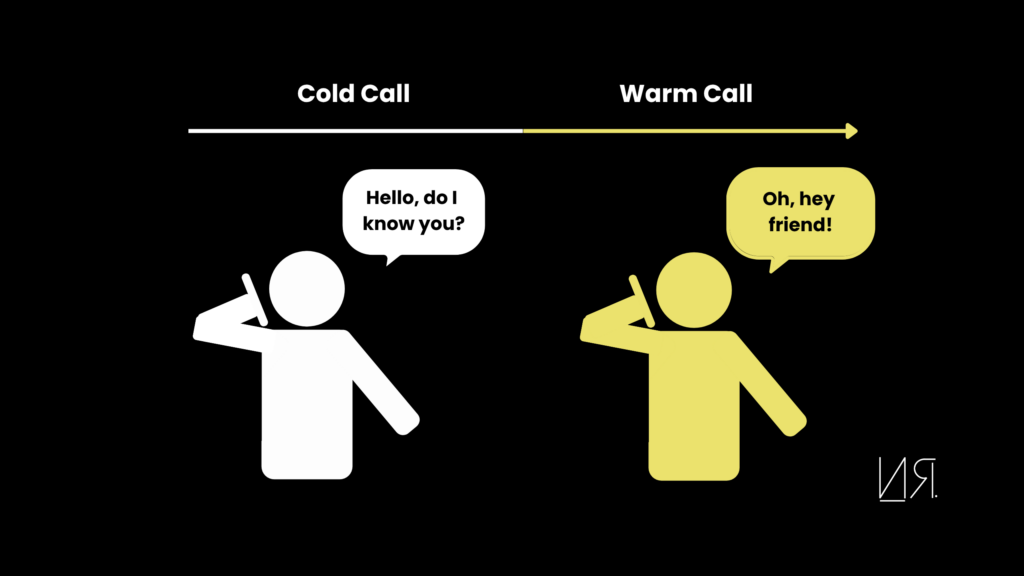Create your conversation starters
Hi Reader, This is part 3 of a 7-part series on how to share expertise to attract and create opportunities in life and business. When I wrote my first blog, I had one goal – rank high for search terms related to my business in 2016. I hardly got an organic lead that came to my website and converted into business. At the same time, I had started writing a fictional story on the weekends. Eventually, I decided to take it seriously but realized I didn’t know how to publish a book. So I joined a writing class that taught me the exact steps. I ended up writing another book and published it as my first book. I continued on the publishing path. Publishing four books, music, and more online content. There seemed to be no rhyme or reason as to why I kept publishing. I mean, book sales are just so-so. I do enjoy the process of ordering my thoughts but why write a book? Then it started happening. People would request for me to join their podcast, others were open to mentoring me. I met one of my main mentors randomly at a coffee shop because he was also writing a book when I was about to publish mine. Over the years, it’s become apparent. Publishing is just an opportunity to start a conversation. It can make your life more interesting. Waiting for opportunities:A lot of people only reach out when they need something. When you’re starting a business, this is amplified because you need to make money. You reach out to family, friends, and strangers. But your outreach can only work if the person on the other side also needs what you are offering. In an ideal world, there will be a sign hovering over people’s heads saying “Nifemi I need your solution. Talk to me now.” But we are not in an ideal world. So comes the guessing game. You reach out and ask whether there is a need. However, the number of people that are aware they have a need is small. The number of people that are aware that you have a solution for their needs is even smaller.
Statistics show that most people will spend 60-70% of their research online before talking to a salesperson at a company. If you build up a content bank, so that people constantly see what you’re talking about, you go from cold to warm leads. When you provide educational content that helps them solve their problems, they begin to see you as a “trusted advisor” guiding their decision-making process. So instead of reaching out to a small number of people at the exact time you need to, hoping they need your services or product, attract conversations before you need to have them. Fan the conversation flame with your content so you can spark one at any time.
Always increase your opportunities to say hello to people that you can help. 2 Steps to Create Your High-Value Conversation StartersI was recently listening to a Chase Jarvis podcast with Seth Godin, an American author, marketing-expert, and entrepreneur. This man has written 21 best-selling books, but who’s counting. He reflected on why he wrote another book:
“Writing a book is five minutes of inspiration and one year of slug. Part of the reason I do it is to have interesting conversations with people like you. Part of the reason I do it is because I want other people to talk about it. The book is a signal that says it’s a document that demands to be rejected, absorbed, or discussed.“ ~ Seth Godin. A book is just another signal – saying there is this compiled document of a perspective. This perspective attracts people to start conversations. Now you don’t have to write a book to create your “perspective signal.” You can document in different ways – compilation of blog posts, albums, newsletters. These are all content libraries. Along with Seth Godin’s 21 books, he has written a blog, every day, for over two decades. With each day, he builds more trust online. Over time, this stack of documents becomes a signal to attract and start conversations. Some of these conversations turn into high-value conversations, which turn into high-impact business deals and career opportunities. Start the practice of sharing your expertise to build up your conversation starters. After you create your “authority signal” and understand how to discover opportunities from conversations in Step 1 and Step 2, it’s time to create your conversation starters. Here’s how: Step 3: Build a Narrative BankBe a content documenter. Most people don’t know what to write about. Most times they freeze or beg ChatGPT to give them something sensible. I learned a little trick about never running out of ideas to write about from a writing class by Tim Denning, one of the most prolific writers and entrepreneurs on Medium, LinkedIn, and Subastack. He said: “Old idea + your insight = new idea.” I hadn’t heard anything like that before so I was a bit skeptical. I later found this same idea in a book called “How to Take Smart Notes.“ Then I found a similar idea about logging personal stories and insights in the book, “Storyworthy.“ The moral of the story is that great storytellers are not necessarily original. They are just great transformers. They take what’s already there, add their take on it, and present a unique perspective. So your main task is to log your daily experiences with short notes. Deposit these notes daily to build your narrative capital. In my phone, I have thousands of notes from daily observations, books, and videos. I use them to write these newsletters and LinkedIn posts. Extract powerful, authentic stories from your experience that demonstrate credibility and insight. With this approach it does not feel like self-promotion. You’re just sharing what you know. Be observant and take notes. Build your narrative capital. Step 4: Master Magnetic Message StructureTransform your narrative capital into persuasive stories. And use the 80/20 rule of storytelling to Hook, deliver, and convert. When I finished my first book, I felt accomplished. I pat myself on the back. My publisher on the other hand, had moved on, tagging me in multiple slack channels, introducing me to book cover designers and editors. We spent an entire month on the cover design. When people say “don’t judge a book by its cover.” That’s a myth in content land. Most judge by the cover, the first sentence, emails by the subject. From writing multiple books, I’ve learned that if you don’t get the audience interested at first look, you lose them. Use structure to practice messages that stick and demand action. When you write online whether that’s an email, post, or newsletter, you want to get attention before you get them to read anything else. You have about 3 seconds to do this. That’s why content creators on YouTube spend hours on the first 5 seconds of their video, title, and thumbnail. Same with writing. Here’s one structure to use. It’s the hook, deliver, convert format.
Learn the repeatable framework to write attractive content that hooks, delivers, and converts. Use it in your posts, emails, and case studies across the buyer’s journey. Final thoughts:Conversations are how you create opportunities. You want to be top of people’s minds when they are ready to have high-value conversations. It’s easy to have these conversations when people know you. Increase your visibility by consistently creating conversation starters in the form of a valuable content library. In the next step, I’ll share how to package your content with a system to attract and nurture relationships consistently.
|
NapoRepublic Letters
Boost your creative confidence every Saturday. Join 240+ creators and overcome creative resistance with tips and diverse stories at the intersection of culture, history, creativity, technology, and empowerment.
NapoRepublic Letter #129July 12, 2025Was this newsletter forwarded to you? Sign up here Hi Reader, This is part 5 of a 7-part series on how to share expertise to attract and create opportunities in life and business. It was Fall 2022. I had just created my first NFT collection – 405 digital tokens to match the number of pages in my award-winning book, Toffy’s Divide. I created the art, wrote the blockchain contract, and added the collection to the blockchain. Simultaneously, I built a...
NapoRepublic Letter #129July 12, 2025Was this newsletter forwarded to you? Sign up here Hi Reader, This is part 2 of a 7-letter series about creating more opportunities in life and business. I'm doing this because I learned about building a business online the hard way. It started with my first business. I tinkered around with an app for almost a year. I paid a developer and a designer. We worked late nights. I got on calls at strange times of the day because of time zone differences. I...
NapoRepublic Letter #129July 12, 2025Was this newsletter forwarded to you? Sign up here Hi Reader, Make this your #1 task - Always be attracting opportunities. You deserve to have options and live a more fulfilling life. If you don’t know how to help people, you’ll struggle to find purpose. Purpose is a combination of fueling personal growth and making a contribution to the life of people around you. I’m eternally on the quest for it. In very few moments, I get a glimpse of insight. The...

